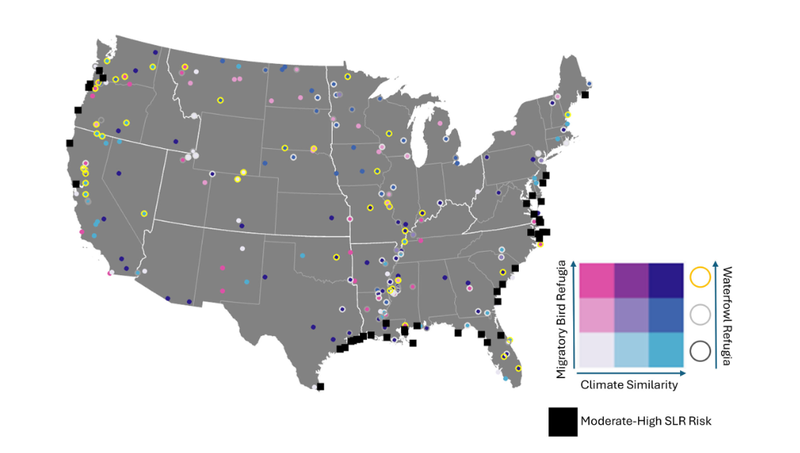

The National Wildlife Refuge System (NWRS) presents an opportunity for climate-change refugia conservation through the expansion of the U.S. protected areas network. Dedicated to conserving and restoring fish, wildlife, and plants and their habitats, the U.S. Fish and Wildlife Service (USFWS) uses best available science to assess three main criteria in the evaluation and prioritization of proposed new refuges and refuge expansions: species listed under the U.S. Endangered Species Act, migratory birds, and waterfowl. We used spatial datasets to explore the current and potential capacity for national wildlife refuges to serve as climate-change refugia and enable the persistence of these three priority groups of species. We developed a refugia metric for each of the three species groups, analyzing values for lands and waters managed by the agency, approved for acquisition, and within 25 km of managed boundaries. We found that, as a whole, the NWRS had significantly greater refugia value than, on average, for the contiguous United States, with variability by USFWS region and refugia metric. While, on average, acquiring approved interests in lands and waters did not significantly increase the refugial value of the NWRS, it did not lower its elevated value, suggesting that current interests could also make a relatively strong contribution. Importantly, there was high variability among refuge units with regard to the refugial value of approved acquisition areas and refuge-adjacent areas, providing expansion options that resulted in improvements for all refugia metrics and regions. We discuss the implications of these findings for expansion as well as additional considerations for next steps and application.